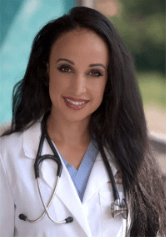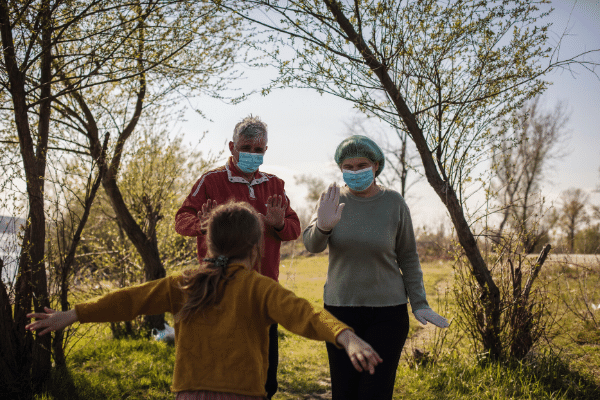
While large gatherings, parades and other activities throughout our nation have been canceled for this year’s Memorial Day ceremony, the spirit of honoring those who have given the ultimate sacrifice in putting their lives on the lines to protect our country, shines bright!
We unite, to recognize the sacrifices of the members of our U.S. Military. Too, during today’s trying times, we honor the troops of essential workers on the frontlines of the battle that has changed our world this year, as we wage war on COVID-19. I must add, as a physician working shoulder-to-shoulder with dedicated teams on the frontlines, I find myself continually giving pause with deep gratitude to everyone who has pulled together to wage war, to flatten the curve and make a difference… to protect our communities, thank you!
This battle isn’t over but now as re-openings are taking place, along with easing of shelter-in-place orders, non-essential travel is back. And as customary with Memorial Day, we kick-off summer — here are some tips to help ensure your summer traveling around is safe.
You may be thinking about a short road trip, time at the beach, in the mountains, at a park, or just strolling down the avenue. Along with maintaining safe COVID-19 hygiene and social distancing practices, health officials are advising to wear face masks and to keep gatherings to under 10, while keeping a respectful distance of 6 feet from others. And there are some summer activities that should be avoided like festivals, parades, concerts – or any gathering that would make social distancing challenging.
This is not the time to let down your guard. These are not ordinary days. The coronavirus is still circulating, and we know that the virus can be carried asymptomatically. We know too that there are people at disproportionately high-risk for serious complications.
As you consider venturing “out and about” follow these tips to help protect yourself in different public environments, while maintaining your social distancing and safe hygiene measures:
Assemble and Carry a Summer Protective Kit:
- Along with sunscreen and bug repellant, basics include disinfecting wipes, multiple face masks or face coverings, hand sanitizer or rubbing alcohol (at least 60%) or bleach mixed with water in a chemical-resistant spray bottle and some disposable trash bags (this disposable hygiene adds up).
- Remember that not all hand sanitizers are created equal. Labels saying, “kills 99.99 percent of illness causing germs”… doesn’t mean the product will protect you against COVID-19. The CDC recommends rubbing-on hand sanitizers with at least 60% alcohol when you aren’t able to wash your hands. “Alcohol-free” products are NOT recommended by the CDC. Nothing beats washing your hands with soap. Some hand sanitizers have benzalkonium chloride instead of alcohol as the active ingredient. Such non-alcohol antiseptic products don’t work as well for many types of germs. The CDC warns they may merely reduce the growth of germs rather than killing them.
- You may want to use disposable gloves, however, they’re not recommended as they can provide a false sense of protection while cross contaminating surfaces. Washing your hands with soap (20 seconds and often) is the most important measure for protection.
- If you decide to go on a road trip – think carefully about the length of your trip, your activities, and plan wisely, packing what you’ll need in advance. One of the simplest ways to avoid the risk of contracting COVID-19 while traveling around is to avoid exposure by doing the same thing more than once, like fueling or getting snacks.
- For longer trips pack laundry detergent, dish soap, hand soap, and enough trash bags to safely discard your disposable hygiene items. Also, when changing clothes, you can place dirty clothes in a trash bag until they can be cleaned. Wash your hands, often, and take precautionary measures to keep your environment surfaces clean. Be prepared to sanitize contact-surfaces including doorknobs, light switches, desk and sink areas. Many places you may consider staying have information available about what amenities they have cut-back on during this time.
Disinfect Your Vehicle, Often:
- Your mode of transportation is a mobile “high-touch” surface, inside and out. Door handles, seatbelts, gear shift, emergency brake, steering wheel, turn signals, phone chargers, seat adjusters, and every other knob and button you grab are potential sources to transmit the highly-contagious coronavirus. You and your family may be the only ones in your car unless you utilize valet or get servicing. The risk is that every time you get back into your car from the grocery store, fueling up, or out of a store you could be bringing the virus into your car with you.
- Use disinfecting cleansers to sanitize down high-contact surfaces when you get back into your car, and wash or sanitize your hands before getting in. On any road trip, the inside of your car is your safe space. Keep it that way.
- If you don’t already have a membership with a service company like AAA, consider getting one. In case of an emergency, they are trained on how to take care of you and your car needs safely during this pandemic.
Visit Places Where Social Distancing Comes Naturally
- Enjoy spaces that support responsible social distancing while avoiding close contact.
- It’s sometimes a wildcard figuring what others may do around you, be prepared to protect your social distancing space if needed by politely but firmly saying something like, “keeping the 6-foot distance will protect you and me.”
It’s important for you physically and mentally to get outside and be active – but do so selectively and wisely. Follow local regulations and stay vigilant tracking the virus prevalence – the cases rising and falling. Be prepared and stay safe.
Dr. Nina Radcliff is dedicated to her profession, her patients and her community, at large. She is passionate about sharing truths for healthy, balanced living as well as wise preventive health measures.
She completed medical school and residency training at UCLA and has served on the medical faculty at The University of Pennsylvania. She is a Board Certified Anesthesiologist. Author of more than 200 textbook chapters, research articles, medical opinions and reviews; she is often called upon by media to speak on medical, fitness, nutrition, and healthy lifestyle topics impacting our lives, today.
.
Dr. Nina Radcliff is dedicated to her profession, her patients and her community, at large. She is passionate about sharing truths for healthy, balanced living as well as wise preventive health measures.
She completed medical school and residency training at UCLA and has served on the medical faculty at The University of Pennsylvania. She is a Board Certified Anesthesiologist. Author of more than 200 textbook chapters, research articles, medical opinions and reviews; she is often called upon by media to speak on medical, fitness, nutrition, and healthy lifestyle topics impacting our lives, today.


































1 thought on “Staying Safe While Moving Around This Summer”
Comments are closed.